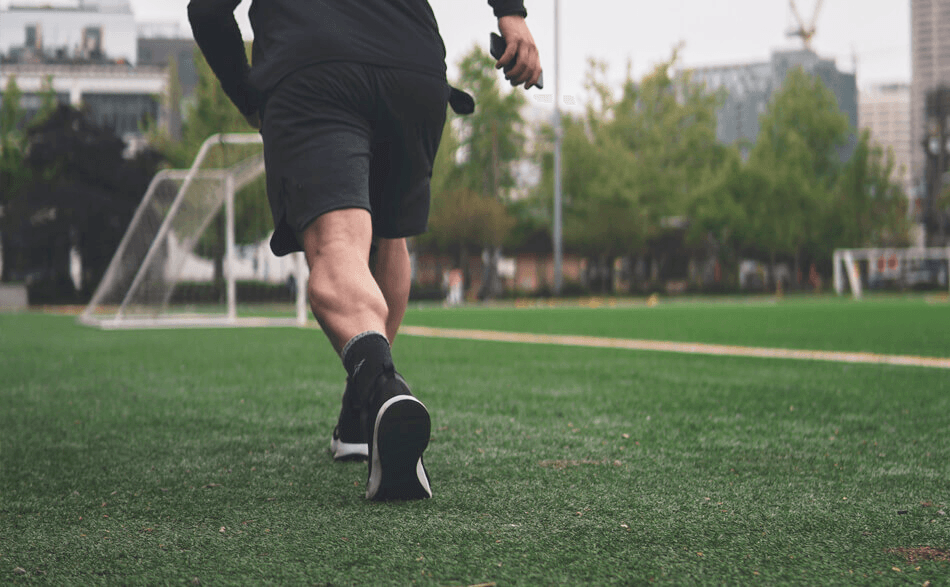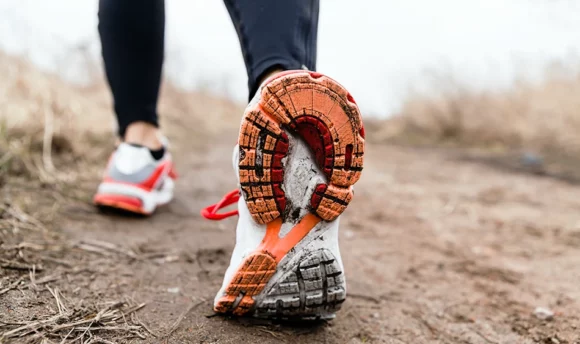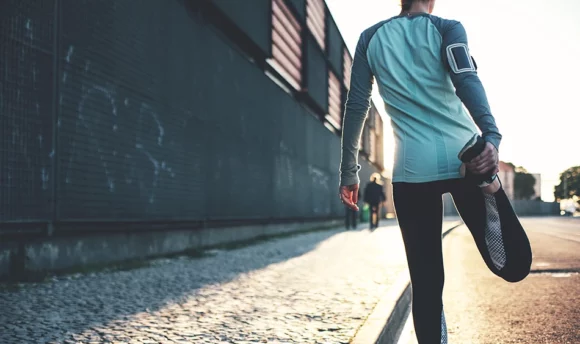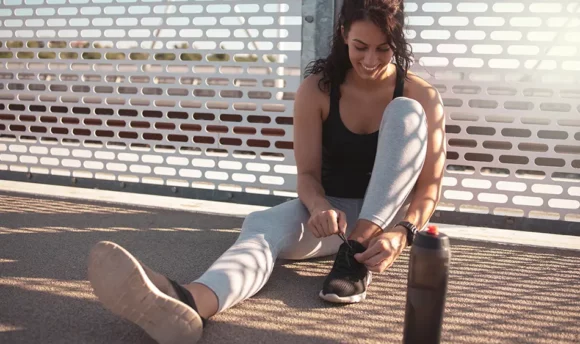Why Do My Calves Hurt? Causes and Tips on How to Relieve the Pain
Running is already hard enough, the last thing you need is tight calves slowing you down.

Calf pain is something a lot of people deal with while running. That is because it is a relatively small muscle that is responsible for carrying a lot of the load when you run.
Although pain in the calves is most often caused by minor issues that can be addressed by simple lifestyle changes, there are also more severe health conditions that can lead to this uncomfortable feeling.
In this article, we will be giving readers more information about the causes of this pain, as well as some useful tips for preventing it in the future.
Why Do My Calves Hurt When I Run?
Your calf muscles may hurt when you run for a couple of different reasons. An obvious cause would be something regarding physical limitations – like a lack of muscle strength due to fatigue or overtraining, or even improper diet and not enough water.
Something that you may find surprising is that poor foot landing due to improper footwear and a bad running stride is also one of the leading causes of pain in the calves while running.
5 Factors That Might Cause Calf Pain
If you’re feeling pain in your calves, it could be due to a number of different things. Pinpointing the cause of your running calf pain can often be difficult because there are many seemingly insignificant factors that could be contributing to these uncomfortable feelings.
#1 Overtraining
Overtraining any muscle will cause your performance to plateau due to increased muscle soreness that continues to get worse the more you train.
When you exercise, you create small tears in your muscle tissue that are rebuilt using protein while you rest. This tear and rebuild process is what allows your muscles to get bigger and stronger.
Without taking the proper time to recover, you don’t give your muscles the opportunity to completely repair this torn tissue. This will cause you to continue feeling soreness in your muscles and can actually lead them to atrophy as opposed to increasing in size and strength.
Not only that, but not taking adequate amounts of time to recover will also lead to a build-up of lactate in your muscles.
Lactate is the byproduct of exercise done in an anaerobic state and is responsible for the soreness you feel after working out.
#2 Muscle fatigue
ATP is the molecule that our muscles use as fuel for our movements. It is created through the breakdown of glycogen in the presence of oxygen.
Without high enough levels of glycogen in the body – which we get from eating carbohydrates – our muscles don’t have enough fuel to power our movements.
If you are using up your reserves of energy without taking enough time in between workouts to build them back up, this can cause your muscles to feel fatigued and cause calf pain while you run.
#3 Strained muscles
A muscle strain is more commonly known as a pulled muscle. It is caused when there is stress on a muscle or tendon, causing it to overstretch or, in some cases, detach completely.
These kinds of injuries tend to happen to people who perform quick stop-and-go type movements, like playing soccer or even sprinting.
The symptoms of a muscle strain are pain or tenderness, muscle spasms and weakness, and limited motion.
If you have any of these symptoms or notice a sudden pain while running, it’s important to stop exercising and rest until the pain goes away. Healing a minor strain is much easier than getting surgery to repair full-on muscle tears.
#4 Change in shoes
Surprisingly enough, one of the leading causes of sore calves is a change of footwear. Often, this happens when people make the switch from a runner which has a slightly elevated heel to one that is more flat on the bottom.
Although this change might seem insignificant, in reality, it can have a big impact on the area of your foot you use to push off as you run, often causing people to run more on their toes.
This adds a lot of strain to the calf muscles, which are now forced to overcompensate this change and take on more of the load-bearing responsibility.
#5 Foot landing
When starting out, most runners tend to run with more of a heel or midfoot strike, meaning they land more toward their heels than the balls of their feet.
This means less load on the calf but causes the impact of their movements to be absorbed more through their lower legs. This impact often contributes to shin splints, which, if not dealt with, can eventually result in stress fractures on the shin bone.
If you are a long-time heel striker and are dealing with injuries like shin splints, it might be worth it for you to try running with a more forefoot-focused strike.
You might notice increased calf muscle tightness when making the switch – due to an increased load on your calves – but if you are intentional about taking time to recover, over time, your muscles will strengthen, and tightness will decrease.
Other Health Causes That Can Impact Calf Pain
Calf pain can sometimes be caused by more serious health complications that, if left untreated, can have more serious negative effects on the body over the long term.
Deep vein thrombosis (DVT)
Deep vein thrombosis is a condition that creates blood clots in one of the deep veins of the body but is most often found in the legs.
The symptoms of having one of these clots in the veins of your legs are usually swelling and soreness of the legs and cramping that often starts in the calf.
Although these symptoms are uncomfortable to deal with, they aren’t overly serious. The real issue with DVT is the possibility for one of these clots to become dislodged and travel through the body back to the heart, where it can cause heart attacks.
Achilles tendonitis
The Achilles tendon is the tendon found at the back of the lower leg that connects the calf muscle to the heel bone.
Achilles tendonitis is a calf injury that is caused by overuse. It can lead to pain and soreness in this tendon. The discomfort that this injury creates is generally just pain that is experienced after running as well as some soreness in the morning.
This is a non-serious injury that is often the result of an increase in intensity or duration of running.
The way to treat it is to simply take some time off to rest and give the tendon a chance to repair and reduce inflammation. Not doing so can result in a more serious injury that can negatively affect your day-to-day activities due to constant pain and discomfort.
6 Ways to Prevent Calf Pain
If you’re tired of dealing with pain in your calves, it’s important to start making lifestyle changes to prevent it. In this section, we will be giving you simple tips that, if implemented, can help you decrease pain and get more satisfaction from your runs.
#1 Stretch before a run
Stretching before a run is a good way to get your muscles, tendons, and joints ready for activity. It’s a simple pre-workout routine that can not only help prevent tightness in your calves but also more severe pain.
Often, the body doesn’t require static stretches but will do just fine with a quick set of dynamic – or ballistic – stretches. Even a quick stretch can stimulate blood flow to your muscles as well as loosen the muscle tissue and fascia, getting the body running-ready.
Stretching can even help prevent things like Achilles tendonitis by improving tendon elasticity.
#2 Stay hydrated
Lack of adequate hydration is one of the biggest causes of muscle cramping, which could be attributed to your tight calves.
#3 Muscle function
The reason that hydration can be so impactful on proper muscle function is that it is what contains electrolytes, which are responsible for muscle contractions.
Calcium and magnesium are two minerals that are essential for any runner. Calcium is what enters the muscle cells when they are due to contract, and magnesium is the mineral responsible for telling your muscles when it’s time to relax.
If you are dealing with muscle cramps when you run, it could be due to a lack of water. It could also be the side-effect of not having enough electrolytes to support your muscle function.
Luckily, this is an easy fix and can be solved by picking up an electrolyte that is designed to support better muscle function while running.
Joggo is a great option because it not only has vitamins and minerals to help support you while running but also aids in a speedy recovery afterward.
#4 Recovery
Proper hydration after your run is also important. This is because it helps flush the muscles of any lactic acid that may have accumulated while you were exercising.
If you are noticing that your muscles continue to feel sore for days after your workouts, try increasing the amount of water you drink per day and see if it makes a difference.
#5 Put ice after a run
You’ve probably heard of athletes taking ice baths after an intense day of training to help improve their muscle recovery.
The reason they do this is that it causes the blood vessels in the body to contract. This contraction pushes the unnecessary byproducts – namely lactic acid – out of the muscles, allowing for it to be flushed out of the body.
Lactic acid causes muscle tissue to break down, so the sooner you can get it out of the body, the better.
#6 Increase running mileage gradually
Feeling tightness in your muscles is a natural part of any running routine. When you push your body to run faster and for longer periods of time, you can expect to feel sore the day after.
You shouldn’t, however, be dealing with sharp pain or more serious calf injuries. Soreness is normal, but pulled muscles and intense cramping are signs that you are taking on too much too quickly.
How to decide your mileage
If you are just starting out, it might be a good idea for you to enlist the help of a personalized running app to help you choose a distance that is right for you.
Otherwise, a simple rule for you to follow is the 10% rule, which simply states that you should increase your speed or distance by no more than 10% every time you decide to make changes to your current running routine.
A 10% increase shouldn’t be implemented on a day-to-day basis and should instead be added to your runs every couple of weeks.
Being mindful of not overworking your body can help set you up for success over the long term and is a good way to prevent overuse injuries.
A Word From Our Coach
Feeling sore after your runs is a sure sign that you are strengthening your body, and there is something satisfying about waking up sore after a solid workout the previous day.
However, if you feel as though you have pain that seems to be sticking around or is affecting you while you run, it’s important you listen to your body and treat it with some time off.
Feeling pain in your calves could be just the excuse you need to treat your body to some much-needed rest and relaxation. You could try visiting a sports massage therapist for a deep tissue massage or even just getting an extra-long night of rest.
As always, exercise is supposed to be an act of self-love that you do to improve how you feel, and feeling good in your body should always be your number one priority.
Bottom Line
Calf pain is a completely normal part of anyone’s running journey, and there are a few different – serious and non-serious – reasons you might be feeling it.
Feeling heaviness in your legs or tightness due to a lack of energy or overworking is completely normal.
As long as you don’t feel severe calf pain that might be caused by something like a pulled muscle, a couple of days of rest or implementing some of the other tips suggested in this article to reduce calf pain can help make your running experience a positive one.

















































 Select your language:
Select your language: 








